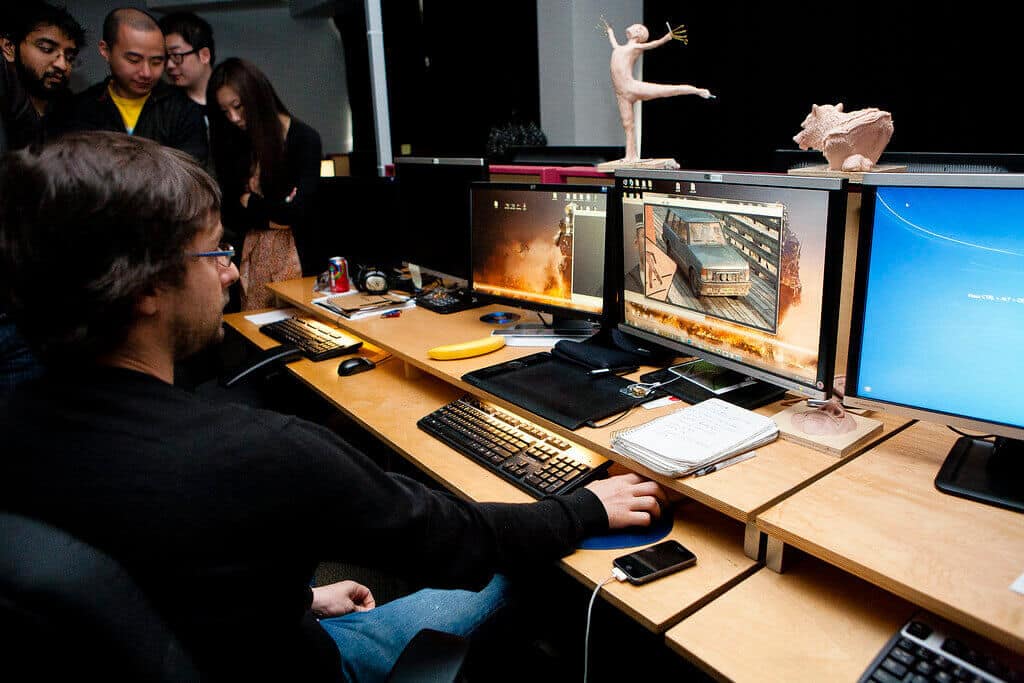In the ever-evolving landscape of the film industry, visual effects (VFX) play a pivotal role in creating mesmerizing and immersive cinematic experiences. As technology continues to advance at a rapid pace, the future of VFX promises even greater possibilities and breathtaking visuals. In this article, we explore the exciting developments and trends that will shape the future of visual effects in the film industry. From realistic virtual environments and AI-powered characters to advancements in motion capture and real-time rendering, let’s delve into the dazzling world of VFX and its potential for transforming storytelling on the silver screen.
The future of VFX will witness the creation of hyper-realistic virtual environments that seamlessly blend with live-action footage. Advancements in computer-generated imagery (CGI) and augmented reality (AR) will allow filmmakers to transport audiences to unimaginable worlds. With the integration of volumetric capture and advanced compositing techniques, VFX artists will bring these digital realms to life with unprecedented detail and believability, enabling filmmakers to push the boundaries of storytelling and visual spectacle.
Artificial intelligence (AI) will revolutionize character creation in the film industry. In the future, AI algorithms and machine learning will enable filmmakers to generate virtual characters that exhibit complex emotions, behaviors, and interactions. These AI-powered characters will enhance storytelling by offering more nuanced performances and realistic interactions with human actors. Additionally, AI-driven facial animation will bring characters to life with astonishing detail, capturing subtle expressions and emotions that deepen the audience’s connection with the story.
Motion capture technology will continue to evolve, enabling filmmakers to capture actors’ performances with greater precision and realism. The future of VFX will witness the development of markerless motion capture systems that eliminate the need for cumbersome sensor suits, allowing actors to move freely and naturally. Additionally, advancements in facial motion capture will capture the subtlest nuances of an actor’s performance, resulting in more authentic and expressive digital characters. These advancements in motion capture technology will bridge the gap between live-action performances and digital characters, facilitating seamless integration and enhancing the overall cinematic experience.
Real-time rendering techniques will become more prevalent in the future of VFX, revolutionizing the filmmaking process. With the advent of powerful GPUs and real-time rendering engines, filmmakers will have the ability to visualize complex scenes and effects in real time during production. This real-time feedback loop will empower directors and VFX artists to make informed creative decisions on set, saving time and resources.
Furthermore, real-time rendering will enhance collaboration between different departments, allowing for more efficient and iterative workflows.
If you want to study the VFX industry, VanArts in British Columbia, Canada has a great program that can be taken in person or 100% online from anywhere in the world (VanArts.com). You will learn how to make visual effects for movies, television, and web series in VanArts’ ROOKIES-Certified and HOUDINI-Certified one-year intensive program. You will also receive a free commercial license of Houdini valued at $2,000 from SideFx Software after graduating. Van Arts instructors have worked on many of the industry’s biggest productions and will mentor you through the program.
VanArts’ Visual Effects program is designed to familiarize you with the fundamentals of visual effects production. In the first 3-month term you will learn the basics of 3D Modeling, Animation & Rendering, 2D Image Manipulation & Compositing, and the history of visual effects techniques. The goal for Term 1 is to build a strong understanding of the building blocks of FX production as it applies to feature films, TV series, or video games & cinematics.
During the second term, you will begin to master the concepts and tools learned in Term 1, plus introductions to industry-standard software HOUDINI for dynamic visual effects. Intermediate FX topics such as Dynamic Simulations and Character Rigging will be studied with an emphasis on how and why things work the way they do. The goal for Term 2 is for you to understand the process of VFX production on an abstract level.
In Term 3, you begin “coloring outside the lines” as you are required to apply your skills in inventive and innovative ways to solve a variety of production requirements. Advanced topics such as Procedural Modeling and Destruction will emphasize creative solutions to complex production problems. You will also begin specializing in areas of particular interest for your final demo reel, and be introduced to Matte Painting. The goal for Term 3 is for you to demonstrate innovative and analytical thinking as well as artistic and technical expertise.
The final term at VanArts is dedicated to the production of an industry-grade demo reel for showing to potential employers. Working under the guidance of industry-pro faculty, you will create a showcase for your particular skills and talent and polish it using industry-standard software. Weeklies and tech support ensure the final quality of your reel, the most important asset, and foundation for your entry into the industry
The future of visual effects in the film industry is a captivating realm of endless possibilities. From realistic virtual environments and AI-powered characters to advancements in motion capture and real-time rendering, the boundaries of storytelling and visual spectacle will be pushed to new heights. As technology continues to advance, VFX will catalyze unlocking the imaginations of filmmakers, captivating audiences, and transporting them to extraordinary worlds. The future of visual effects holds the promise of an exhilarating cinematic experience, where the line between reality and imagination becomes increasingly blurred on the silver screen.
– If you are looking for guest posts write for us entertainment now.

